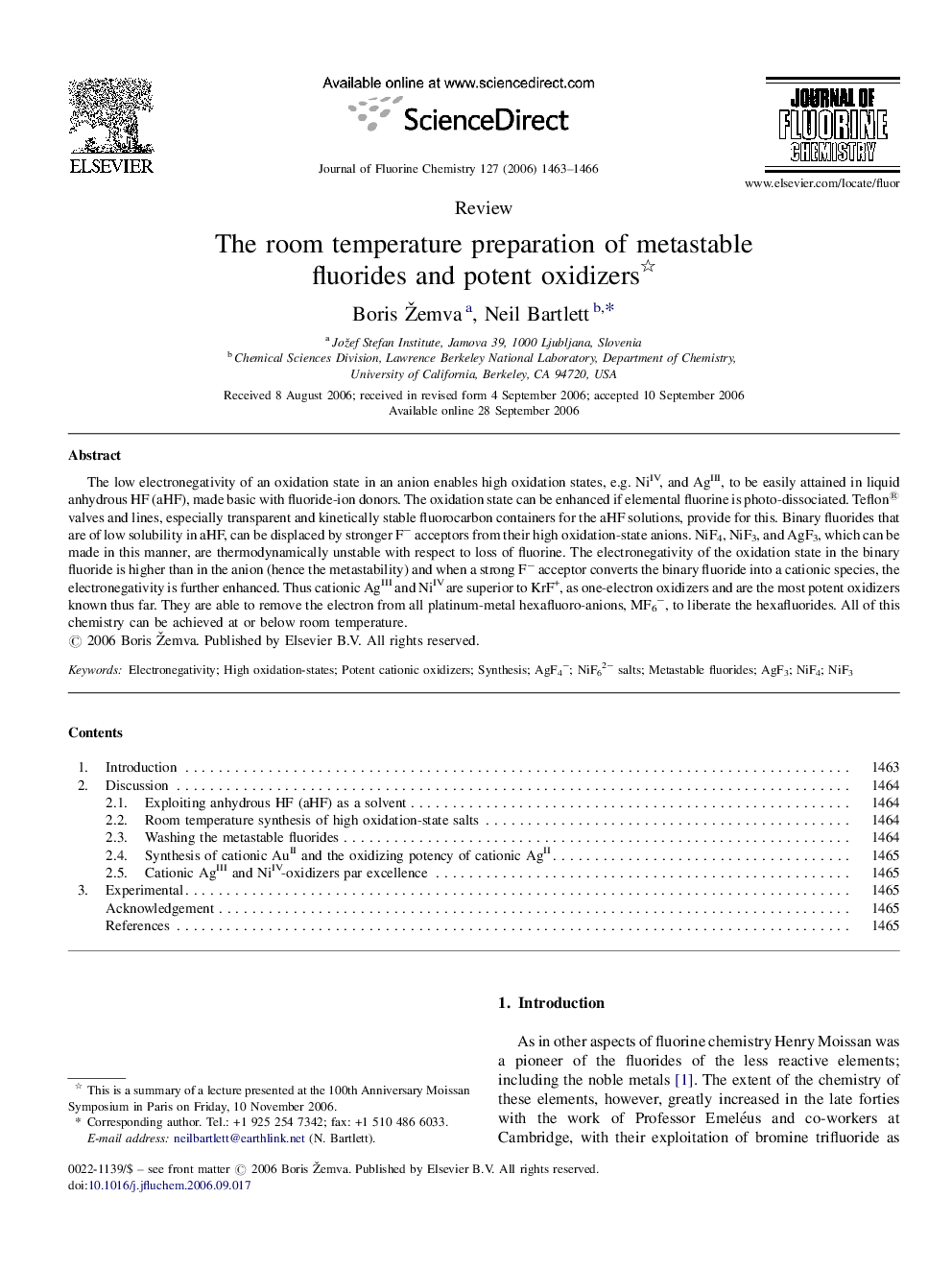| کد مقاله | کد نشریه | سال انتشار | مقاله انگلیسی | نسخه تمام متن |
|---|---|---|---|---|
| 1315212 | 976012 | 2006 | 4 صفحه PDF | دانلود رایگان |

The low electronegativity of an oxidation state in an anion enables high oxidation states, e.g. NiIV, and AgIII, to be easily attained in liquid anhydrous HF (aHF), made basic with fluoride-ion donors. The oxidation state can be enhanced if elemental fluorine is photo-dissociated. Teflon® valves and lines, especially transparent and kinetically stable fluorocarbon containers for the aHF solutions, provide for this. Binary fluorides that are of low solubility in aHF, can be displaced by stronger F− acceptors from their high oxidation-state anions. NiF4, NiF3, and AgF3, which can be made in this manner, are thermodynamically unstable with respect to loss of fluorine. The electronegativity of the oxidation state in the binary fluoride is higher than in the anion (hence the metastability) and when a strong F− acceptor converts the binary fluoride into a cationic species, the electronegativity is further enhanced. Thus cationic AgIII and NiIV are superior to KrF+, as one-electron oxidizers and are the most potent oxidizers known thus far. They are able to remove the electron from all platinum-metal hexafluoro-anions, MF6−, to liberate the hexafluorides. All of this chemistry can be achieved at or below room temperature.
Because of the lower electronegativity of an oxidation state in an anion, AgF4− and NiF62− are made easily at room temperatures, with photo-activation of elemental F2, in basic aHF solutions. Electronegativity is higher in the metastable fluorides AgF3 and NiF4, and highest in cationic AgIII and NiIV species, which are yet, the most potent oxidizers. Figure optionsDownload as PowerPoint slide
Journal: Journal of Fluorine Chemistry - Volume 127, Issue 11, November 2006, Pages 1463–1466